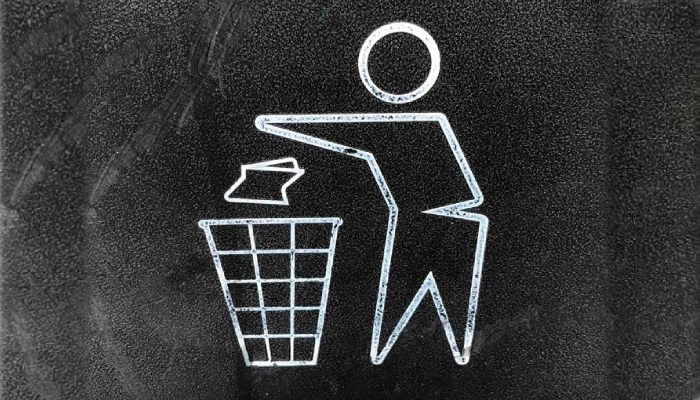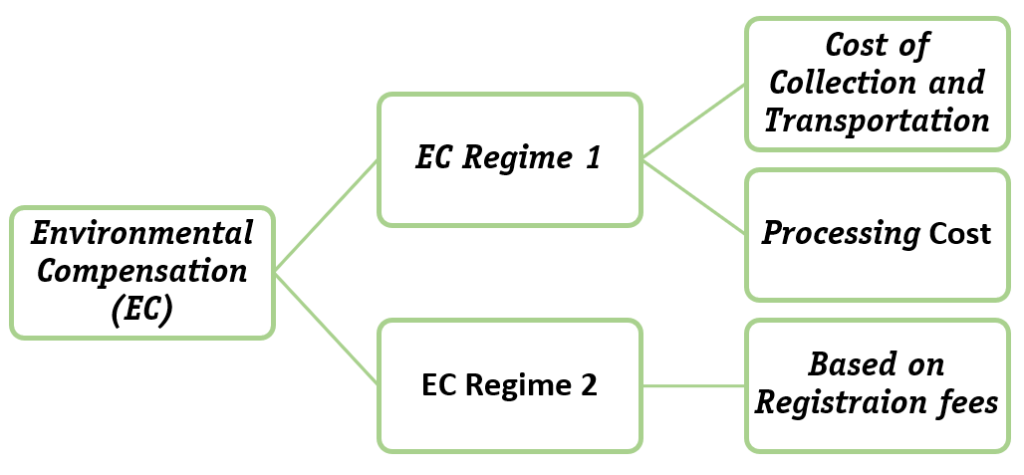
or

India is grappling with an escalating e-waste crisis, driven by the rapid proliferation of electronic devices. With millions of tons of e-waste generated annually, effective management is crucial for environmental sustainability. The Extended Producer Responsibility (EPR) framework, outlined in the E-Waste (Management) Rules, mandates that manufacturers and producers bear responsibility for the entire lifecycle of their products. The 2024 guidelines for Environmental Compensation (EC) form an essential part of this framework and serve as both a deterrent for non-compliance and a funding mechanism for waste management initiatives. This is complemented by a new provision introduced by the 2024 Amendment Rules, which allows the Central Government to establish platforms for the exchange of Extended Producer Responsibility certificates, enhancing accountability in e-waste management.
The EC funds collected are strategically allocated to several key areas: enhancing collection and environmentally responsible recycling of uncollected e-waste, including historical and orphaned types; investing in research and development to advance recycling technologies and improve waste management solutions; providing financial incentives to stimulate the recycling industry and attract more participants; and supporting local bodies in waste management projects to ensure effective grassroots implementation of these initiatives.


of recyclers and producers on the E-Waste EPR Portal. A base EC charge of ₹20,000 is established for producers to standardize expectations. For Recyclers, Manufacturers and Refurbishers, ₹15,000 is considered as the parameter in this regime.
The e-waste value chain is multifaceted, involving various stakeholders from collection to recycling. Within this chain, a significant portion of the activity occurs in the informal sector, where collectors, transporters, and recyclers operate outside the regulatory framework. These informal recyclers play a pivotal role in the initial stages of e-waste processing by collecting discarded electronic devices and extracting valuable materials. However, their operations are characterized by several detrimental practices that pose severe environmental and public health risks.
Under the E-Waste (Management) Rules, 2022, and subsequent amendments, four end products have been recognized as crucial outputs of e-waste recycling: gold (Au), copper (Cu), aluminium (Al), and iron (Fe). Recovering these valuable materials through formal channels requires significant investments in:
Establishing a floor price for EPR certificates is crucial for several reasons, particularly in creating a sustainable and competitive recycling industry that can effectively address the challenges posed by the informal sector.
Producers must meet their Extended Producer Responsibility (EPR) obligations by purchasing EPR Certificates online, only from registered E-Waste Recyclers. The Central Pollution Control Board (CPCB) issues these certificates through the Portal to registered Recyclers. Registered Recyclers are required to upload information about the quantities of E-Waste they have procured, collected, recycled, and the end products they have produced and sold onto the E-Waste EPR Portal. Based on this uploaded information, the CPCB generates the EPR certificates for the Recyclers. These certificates are subject to environmental audits conducted by the CPCB or other authorized agencies.
According to the new e-waste management amendment rules notified on March 8, 2024, the government may establish multiple platforms for the exchange or transfer of these certificates, all regulated in accordance with guidelines set by the Central Pollution Control Board (CPCB). The central government has taken an active role in regulating this trading system by empowering itself to set the prices for EPR certificates.
The CPCB is tasked with determining the highest and lowest prices for EPR certificates, which will range from 30% to 100% of the environmental compensation for non-fulfilment of EPR obligations. This regulatory framework aims to ensure a fair and stable trading environment while incentivizing producers to meet their recycling targets.
The CPCB’s regulation of EPR certificate prices is a critical aspect of the EPR framework. Ensuring that the lowest price for EPR certificates does not exceed the market value of recovered metals, Promotes sustainable practices and encourages material recovery. Producers are incentivized to invest in the recycling of e-waste rather than purchasing metals from the market, leading to a more sustainable cycle of materials.
Despite the promising framework for EPR certificate trading, several challenges may arise in its implementation:
With the establishment of multiple platforms for exchanging EPR certificates, the need for synchronization becomes paramount. Several challenges are associated with this:
The risk of double reporting becomes significant when multiple platforms operate independently, potentially leading to inflated compliance numbers:
Transparency is vital for fostering trust among all stakeholders in the EPR system. Several strategies can enhance transparency:
The EPR framework for e-waste in India, augmented by Environmental Compensation and EPR credit trading, is a significant advancement in environmental governance. By facilitating flexibility, encouraging sustainable practices, and introducing market dynamics, it holds significant promise for improving e-waste management. However, addressing potential implementation challenges, particularly in terms of synchronization, reporting integrity, and transparency, will be critical for the success of this initiative. Through robust regulatory measures and stakeholder collaboration, India can effectively harness the benefits of EPR certificate trading while mitigating associated risks and set a global precedent for responsible electronic waste management.
Sonal Verma leads the ESG Practice in the firm as a Partner and Global Leader – Markets & Strategy. With his crossroad working with business & laws – he brings advice & technology for effective change management in the journey of ESG. Sonal is well acclaimed for his work in regulatory & compliance programs over the last decade. He had in the past worked with 1800 plus clients in India and 61 other countries globally. He has worked with the top 3 unicorns and many Fortune 500 companies. His clients have been across different industries, viz. Automotive and OEMs, Pharma and Life Sciences, Manufacturing, Chemical Industry, BFSI, Infrastructure and Utilities (including stateowned PSUs), e-Commerce and Fintech Companies, Diversified Conglomerates etc.
Deeksha Tiwari is an Associate at Dhir & Dhir Associates (ESG Team)

Lex Witness Bureau

Lex Witness Bureau

Lex Witness Bureau

For over 10 years, since its inception in 2009 as a monthly, Lex Witness has become India’s most credible platform for the legal luminaries to opine, comment and share their views. more...
Connect Us:


The Grand Masters - A Corporate Counsel Legal Best Practices Summit Series
www.grandmasters.in | 8 Years & Counting
The Real Estate & Construction Legal Summit
www.rcls.in | 8 Years & Counting
The Information Technology Legal Summit
www.itlegalsummit.com | 8 Years & Counting
The Banking & Finance Legal Summit
www.bfls.in | 8 Years & Counting
The Media, Advertising and Entertainment Legal Summit
www.maels.in | 8 Years & Counting
The Pharma Legal & Compliance Summit
www.plcs.co.in | 8 Years & Counting
We at Lex Witness strategically assist firms in reaching out to the relevant audience sets through various knowledge sharing initiatives. Here are some more info decks for you to know us better.
Copyright © 2020 Lex Witness - India's 1st Magazine on Legal & Corporate Affairs Rights of Admission Reserved